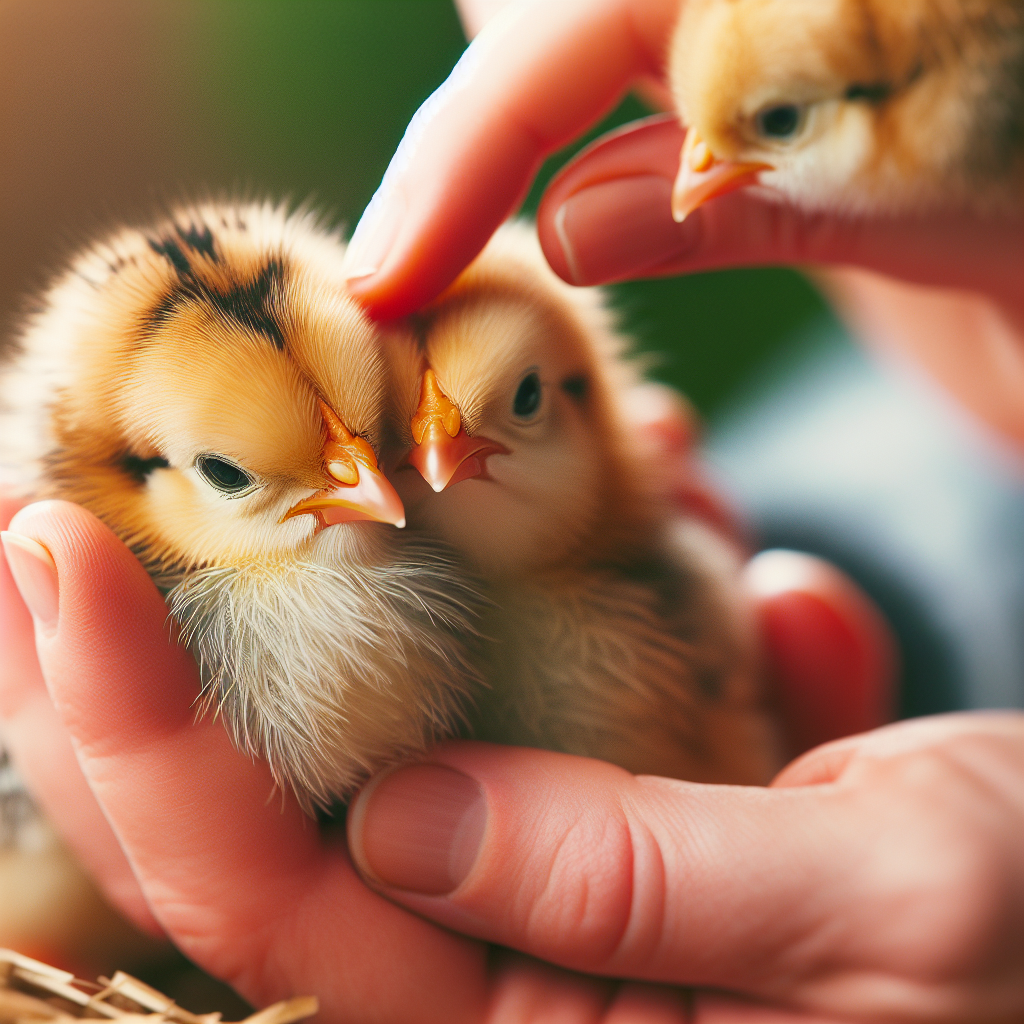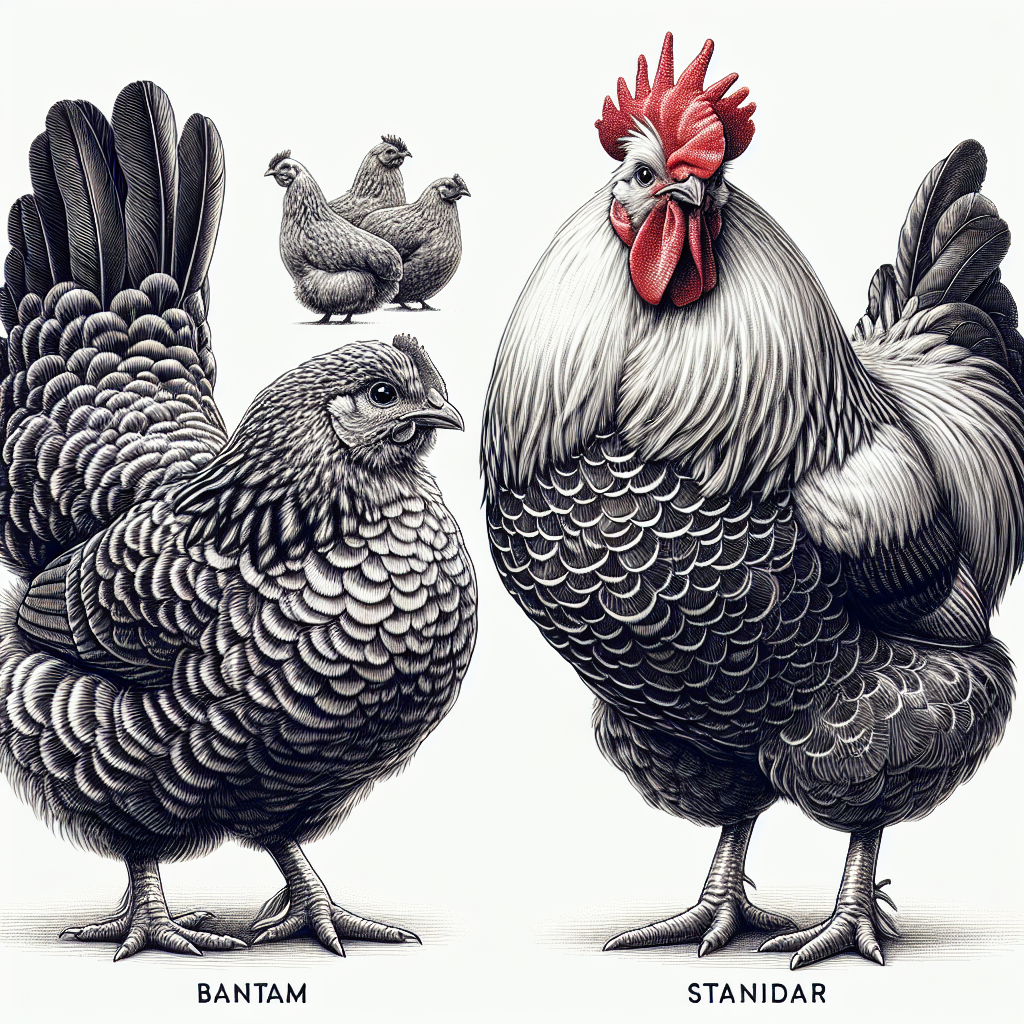Have you ever wondered how to handle having multiple roosters in one flock? It can be a challenge to ensure they coexist peacefully and maintain harmony within the flock. In this article, we will explore some practical tips and strategies to help you effectively manage multiple roosters and promote a harmonious environment for your feathered friends. Whether you’re a seasoned chicken keeper or just starting out, these insights will surely come in handy when navigating the dynamics of a flock with multiple roosters.
Setting Up Separate Living Areas
Providing Sufficient Space
When managing multiple roosters in a single flock, it is essential to provide sufficient space to ensure the well-being and harmony of the birds. Each rooster requires its own living area to establish its personal territory and avoid conflicts with other roosters. Having separate living areas will also help reduce stress and aggression among the roosters. Make sure each living area is adequately sized, with enough room for the rooster to move around comfortably and have access to essential amenities such as food, water, and shelter.
Creating Individual Coops
To ensure a peaceful coexistence among multiple roosters, it is crucial to create individual coops within their respective living areas. This allows each rooster to have its own personal space and a secure place to rest and sleep. The coops should be sturdy and well-ventilated, providing enough room for the rooster to stretch its wings and move freely. Adding perches at different heights will also allow the roosters to establish their territories and help prevent disputes.
Establishing Separate Feeding Stations
Another vital aspect of managing multiple roosters is to establish separate feeding stations for each bird. Food is a valuable resource that can trigger competition and aggression between roosters. By providing distinct feeding stations, you ensure that each rooster has equal access to food and reduces the chance of fights breaking out during meal times. Make sure to place the feeding stations in different areas to avoid crowding and create a calm and controlled feeding environment for each rooster.
Managing Rooster-to-Hen Ratio
Determining the Ideal Rooster-to-Hen Ratio
Finding the ideal rooster-to-hen ratio is crucial for maintaining a balanced and harmonious flock. A general rule of thumb is to have one rooster for every eight to ten hens. This ratio helps to minimize tension and aggression among the roosters while ensuring that each hen receives adequate attention and mating opportunities. It is essential to strike a balance and avoid having too few or too many roosters in the flock, as both situations can lead to stress, fighting, and reduced fertility.
Considering Flock Size
The size of your flock also plays a role in determining the appropriate rooster-to-hen ratio. For smaller flocks, it is advisable to have fewer roosters to prevent overbreeding and excessive competition. Conversely, larger flocks can accommodate more roosters, allowing for a more balanced distribution of mating opportunities among the hens. Assess the size of your flock and adjust the number of roosters accordingly, keeping in mind the well-being and reproductive health of your birds.
Observing Rooster Behavior
Close observation of rooster behavior is essential when managing multiple roosters. Monitoring their interactions and behavior towards both hens and other roosters can give you valuable insights into their social dynamics. Notice if any particular rooster consistently displays aggressive behavior or successfully dominates others. Identifying these patterns early on can help you address and manage potential conflicts before they escalate.
Addressing Aggression Issues
If you notice aggressive behavior among your roosters, it is crucial to take immediate action to prevent injuries and maintain a peaceful flock. You can try separating the aggressor rooster temporarily to calm the situation and assess its behavior. In severe cases, removing the aggressive rooster from the flock may be necessary to ensure the safety and well-being of the other birds. Introducing new roosters or rearranging the flock hierarchy can also help alleviate aggression issues.
Observing Rooster Behavior
Recognizing Dominant Roosters
In a flock with multiple roosters, it is important to recognize the dominant individuals. Dominant roosters often display confident and assertive behavior, taking charge of the flock and protecting the hens. They might strut proudly, hold their heads high, and assert their authority over other roosters. Recognizing these dominant individuals allows you to understand the flock dynamics better and ensure that they have adequate resources and attention.
Identifying Aggressive Behavior
Alongside dominant behavior, it is important to identify any aggressive behavior among the roosters. Aggression can manifest in various ways, such as threats, pecking, chasing, and physical fights. Aggressive roosters may exhibit raised hackles, flapping wings, and charging at other birds. It is important to closely observe the flock and intervene whenever aggressive behavior becomes a regular occurrence to prevent injuries and maintain a peaceful environment.
Monitoring Mating Behavior
Roosters play a vital role in the reproductive success of the flock, and monitoring their mating behavior is essential. The presence of multiple roosters can lead to competition for mating rights, and it is crucial to ensure that all hens have equal opportunities to mate. Watch for signs of excessive mating or bullying towards certain hens, as this can impact the overall well-being and fertility of the flock. Intervene if necessary to ensure fair mating practices and minimize stress among the hens.
Preventing Fights and Injuries
Removing Roosters that are Constantly Fighting
If two or more roosters consistently engage in fights that result in injuries, it is important to remove the aggressive individuals from the flock. Continuous fighting not only poses a risk of harm to the roosters but also disrupts the overall harmony of the flock. Separating the fighting roosters allows them to cool down and prevents further injuries. Consider rehoming the aggressive roosters if finding them a suitable environment where they can thrive without causing harm within the flock.
Providing Environmental Enrichment
To prevent fights and promote a peaceful coexistence, it is vital to provide environmental enrichment. Boredom and lack of stimulation can contribute to aggression among roosters. Ensure that each living area includes various elements such as perches, hiding spots, dust baths, and toys. These enrichments keep the roosters occupied and help redirect their energy towards positive behaviors, reducing the likelihood of fights or aggressive interactions.
Keeping Roosters Busy and Active
Engaging roosters in activities that keep them busy and active can also help prevent fights and injuries. Foraging toys, hanging treats, and interactive feeders can provide mental and physical stimulation for the roosters. Additionally, engaging in regular free-range or supervised roaming activities can help burn excess energy and reduce tension within the flock. The more active and occupied the roosters are, the less likely they are to engage in aggressive behavior.
Maintaining Peaceful Coexistence
Encouraging a Balanced Social Structure
Establishing a balanced social structure within the flock is essential for maintaining peaceful coexistence among multiple roosters. This means allowing each rooster to find its place in the hierarchy without excessive dominance or aggression. By promoting a balanced social structure, you encourage mutual respect and reduce the risk of tensions flaring up. Avoid favoring or excessively disciplining specific roosters, as this can disrupt the delicate social dynamics within the flock.
Ensuring Sufficient Resources for All Roosters
When managing multiple roosters, it is crucial to provide sufficient resources for all individuals. Make sure there are an ample number of feeding stations, water sources, and nesting areas to avoid competition and conflicts over limited resources. Additionally, check that the living areas are adequately sized and have appropriate amenities to accommodate the number of roosters in the flock. Ensuring equal access to resources helps minimize stress and maintains harmony among the roosters.
Promoting Social Interactions among Roosters
Promoting positive social interactions among roosters can help foster a harmonious flock. Encourage opportunities for roosters to engage in non-aggressive behaviors, such as dust bathing together, perching side by side, or exploring the surroundings as a group. These interactions allow the roosters to establish bonds, diffuse tensions, and strengthen their social dynamics. By providing a nurturing environment that encourages positive interactions, you contribute to a peaceful coexistence among the roosters.
Reducing Noise Levels
Utilizing Soundproofing Techniques
Managing multiple roosters in a single flock can potentially lead to increased noise levels, especially during the early morning when roosters crow to establish their territories. To minimize noise disturbances, consider utilizing soundproofing techniques in their living areas. This can involve using sound-absorbing materials such as foam panels, establishing barriers to reduce noise transmission, or locating the coops in areas away from residential zones.
Strategic Placement of Roosters’ Enclosures
Strategically placing the roosters’ enclosures can also help reduce noise levels. Position the coops in an area where there are natural barriers, such as trees or shrubs, that can absorb or deflect sound. This helps mitigate the noise reaching neighboring areas or houses. Additionally, consider locating the roosters’ living areas farther away from residential buildings to minimize disturbances to nearby residents.
Coping with Crow and Disturbance Complaints
Communicating with Neighbors and Local Authorities
If crowing and disturbances from your roosters become a concern for your neighbors, it is crucial to maintain open and respectful communication with them. Explain your efforts in managing the roosters and listen to any complaints or concerns they may have. Addressing their concerns and finding mutually acceptable solutions, such as adjusting the roosters’ living area or implementing noise reduction measures, can help maintain positive relationships with your neighbors. If necessary, consult local authorities to understand any regulations or noise mitigation strategies that may apply.
Muffling the Sound of Crow in the Morning
To minimize the impact of crowing on neighboring properties, consider implementing measures to muffle the sound in the early morning hours. One option is to provide roosters with a dedicated crowing area that is soundproofed or partially enclosed. This can help contain and muffle their calls, reducing the noise’s reach. Additionally, providing roosters with distractions or keeping them occupied during the early morning hours can help reduce the intensity and frequency of crowing.
Avoiding Inbreeding
Understanding the Risks of Inbreeding
When managing multiple roosters in a flock, it is crucial to be aware of the risks associated with inbreeding. Inbreeding can lead to reduced genetic diversity, which can negatively impact the overall health and vitality of the flock. It can increase the likelihood of genetic disorders, lowered fertility, and weakened immunity. To avoid these risks, it is important to introduce new bloodlines periodically and ensure that roosters do not mate with closely related hens.
Implementing Proper Breeding Practices
Implementing proper breeding practices is vital in avoiding inbreeding. When selecting roosters for breeding, make sure to keep track of their lineage to prevent mating with close relatives. Introduce new rooster bloodlines regularly to maintain genetic diversity within the flock. Carefully plan and monitor breeding pairings to ensure that each hen is paired with genetically unrelated roosters. By following these practices, you can preserve the health and genetic integrity of your flock.
Ensuring Health and Well-being
Providing Appropriate Nutrition
Maintaining the health and wellbeing of multiple roosters requires providing them with appropriate nutrition. A balanced and varied diet is essential to support their overall health, growth, and reproductive capabilities. Supply a quality commercial poultry feed that meets the nutritional requirements for roosters. Supplement their diet with fresh fruits, vegetables, and forage to provide additional nutrients and mental stimulation. Ensure access to clean, fresh water at all times, as dehydration can lead to health problems.
Monitoring Rooster Health and Seeking Veterinary Care
Regularly monitoring the health of your roosters is crucial in preventing and addressing any potential issues. Keep an eye out for signs of illness or injury, such as changes in appetite, feather condition, or behavior. Any signs of respiratory distress, lameness, or unusual discharge should be promptly investigated. Establish a relationship with a poultry veterinarian who can provide guidance, perform routine check-ups, and offer medical care when needed.
Preventing Overbreeding
Overbreeding can lead to exhaustion, reduced fertility, and overall decline in rooster health. To prevent overbreeding, ensure that the rooster-to-hen ratio is appropriate and balanced. Consider rotating roosters or introducing new breeding stock regularly to give each rooster adequate rest and prevent overexertion. By managing breeding practices responsibly and providing ample recovery time, you can maintain the well-being and reproductive capabilities of your roosters.
Conclusion
Managing multiple roosters in a single flock requires careful consideration and thoughtful planning. By setting up separate living areas, managing the rooster-to-hen ratio, observing rooster behavior, preventing fights and injuries, maintaining a peaceful coexistence, reducing noise levels, addressing disturbance complaints, avoiding inbreeding, and ensuring health and well-being, you can create a harmonious and thriving flock. With proper care and attention, you can enjoy the beauty and companionship that multiple roosters bring to your poultry endeavors.




